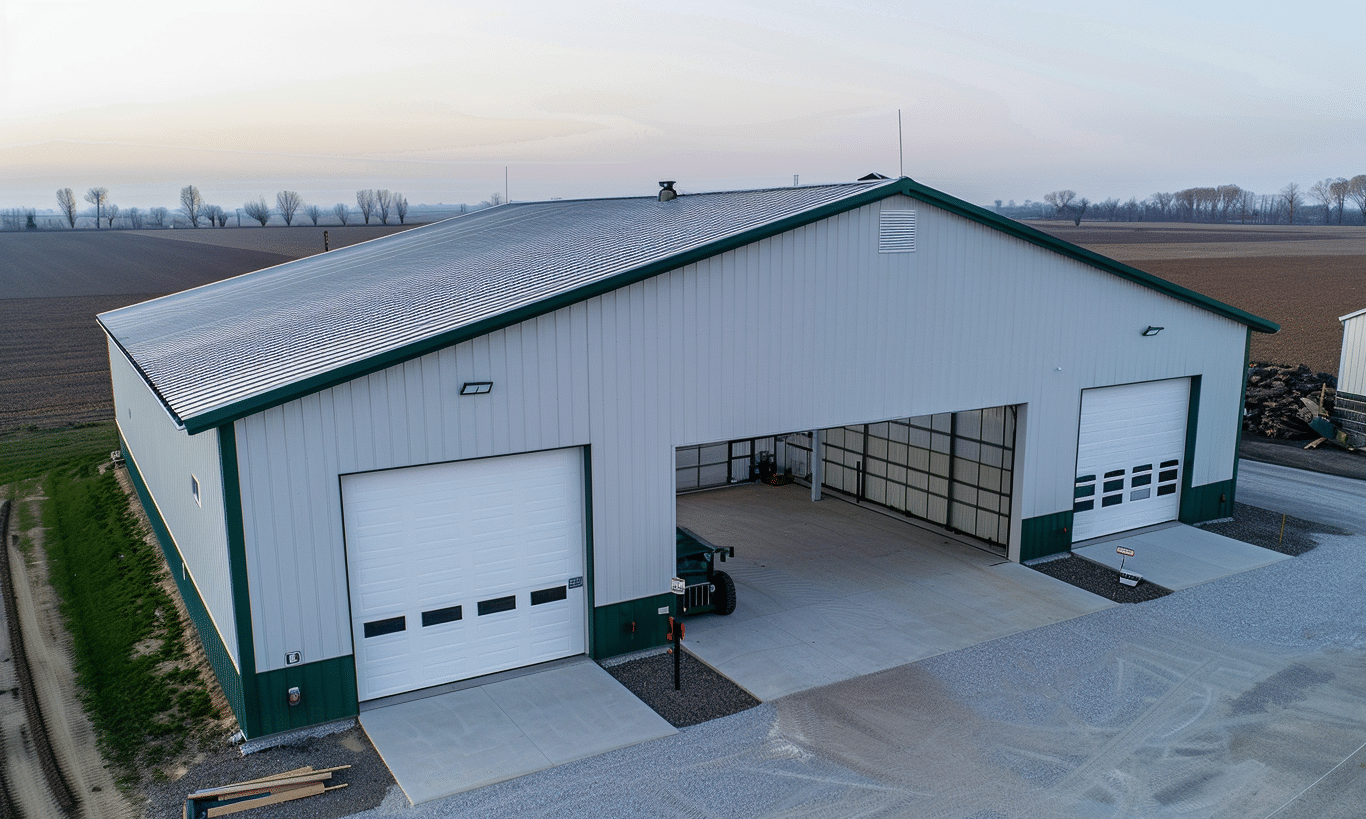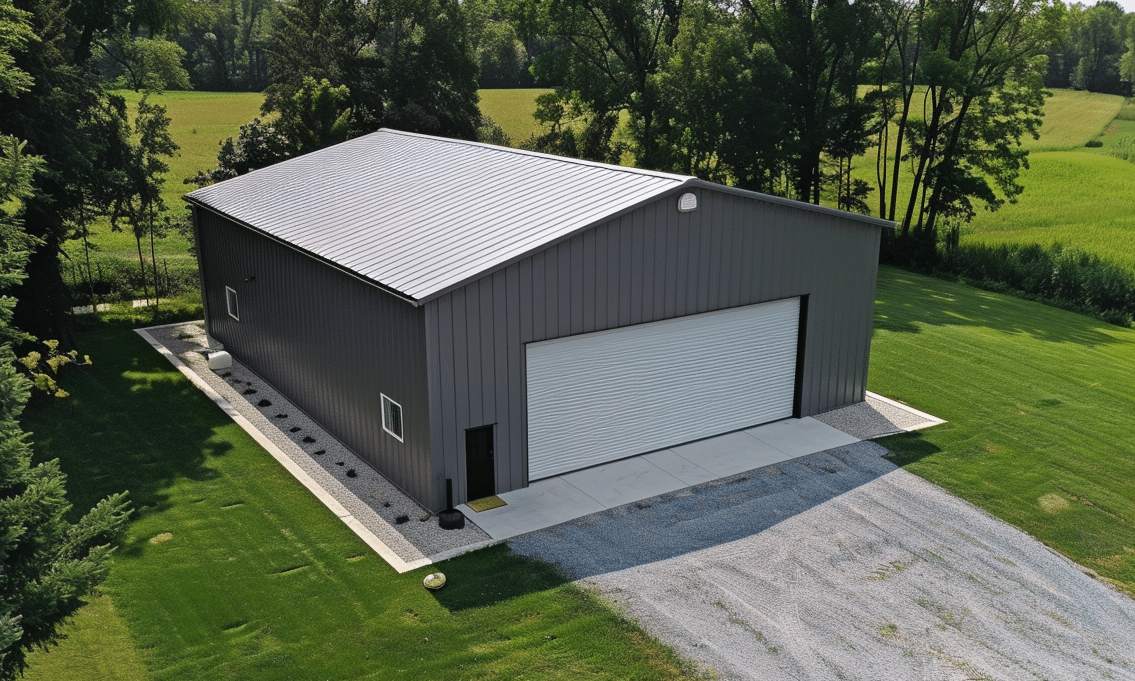Embarking on the journey of building your own pole barn can be an exhilarating yet daunting task. You might be envisioning an agricultural oasis, a sturdy workspace, or a spacious storage facility. But where do you start? How do you traverse this vast DIY landscape to craft a pole barn that stands the test of time? This guide aims to arm you with essential DIY pole barn construction tips that will ultimately lead you to success.
Understanding Pole Barn Construction Basics
Before diving into the nitty-gritty details, it’s vital to grasp the essence of pole barn construction. These versatile structures, often referred to as post-frame buildings, inherently have a style that uses large posts set in the ground to bear the weight of the roof. This minimizes the need for an elaborate foundation, making them cost-effective and relatively easy for DIY enthusiasts.
Why Choose a Pole Barn?
A question worth pondering at the outset: why opt for building a pole barn instead of traditional construction methods? The answer lies in their versatility, affordability, and longevity. Pole barns serve a multitude of purposes, from protecting vehicles and machinery to hosting events and storing hay. Their simplicity in engineering and construction makes them a prime choice for DIY projects.
Planning and Permits: The Crucial First Steps
Much like planting, the success of a pole barn project is rooted in careful planning. Invest time in planning a pole barn project thoroughly, ensuring you cover every angle from design to materials.
Designing Your Structure
The allure of designing your structure can sometimes overshadow practicality. It’s crucial to strike a balance between aesthetics and function. Consider the purpose of your pole barn, the climate, and your site’s topography. Drafting software can be handy here, allowing you to visualize your ideas.
The Permit Puzzle
Navigating the world of permits can feel like untangling a tricky knot. Nonetheless, securing the right permits is non-negotiable. Reach out to your local building authority to understand zonal laws and environmental regulations that might impact your construction.
DIY Construction Tips for a Robust Pole Barn
With solid plans in place, it’s time to roll up your sleeves. Here are some tried-and-true DIY pole barn construction tips to keep you on track:
Foundation and Site Preparation
Start by evaluating your site. Is it level, and does it have good drainage? Level ground reduces the complexity of construction. Run soil tests, especially if your area is prone to flooding. A strong foundation is non-negotiable, setting the stage for your thriving structure.
Setting the Posts
The cornerstone of pole barn longevity lies in how well you set your posts. Dig post holes that go below the frost line to prevent shifting. Concrete is a reliable method for setting posts firmly; just ensure it’s hardened completely before moving to the next steps.

Trusses and Roofing
Trusses can be complex, and their assembly demands precision to brace against weather adversities. Assemble trusses on the ground, but enlist help for lifting and securing them onto the posts. Choose a roofing material that matches your climate’s demands – metal is popular for its durability and low maintenance.
Walling Up
Post-frame walls are straightforward to construct. Begin by attaching girts – horizontal members that support wall sheathing. Choose cladding based on both preference and functionality. Metal sidings are common, offering resilience and minimal upkeep.
Finishing Touches and Maintenance
As you approach the finish line, don’t neglect those final flourishes that elevate good projects to great ones.
Doors, Windows, and Insulation
Selecting the right doors and windows affects not only aesthetics but also light and airflow. For those harsh winter months, insulation is your ally. Focus on insulating the roof and walls correctly to ensure the pole barn meets its intended purposes year-round.
Keeping Your Pole Barn Pristine
A pole barn isn’t a “set it and forget it” deal. Regular maintenance prolongs its life. Inspect your structure seasonally – look for signs of wear, especially around the roofing and foundational posts. Safety measures should also be reinforced continuously to safeguard your investment.
Consulting Experts and Resources
While pole barns are fantastic for DIY endeavors, don’t hesitate to seek help when needed. Resources like BuildForce Canada – DIY Pole Barn Construction can provide invaluable insights, ensuring you’re on the right track. Additionally, consulting professionals, such as Your Building Team, can optimize your construction process, marrying expertise with your vision.
In conclusion, constructing a DIY pole barn is akin to cultivating a garden. It requires patience, dedication, and the right tools for nurturing success. By adhering to these DIY pole barn construction tips, you’ll become adept not only at building but also at crafting a legacy structure. Remember, the journey may have twists and turns, but the destination is worth every bit of effort.










